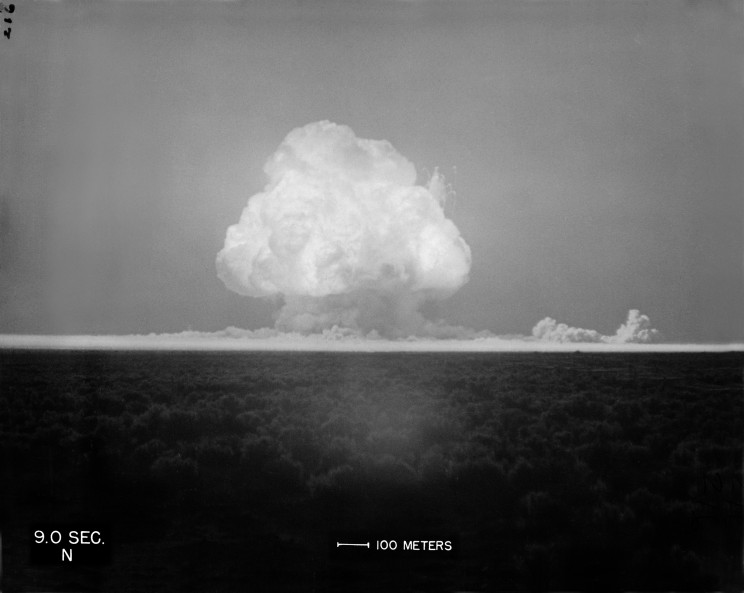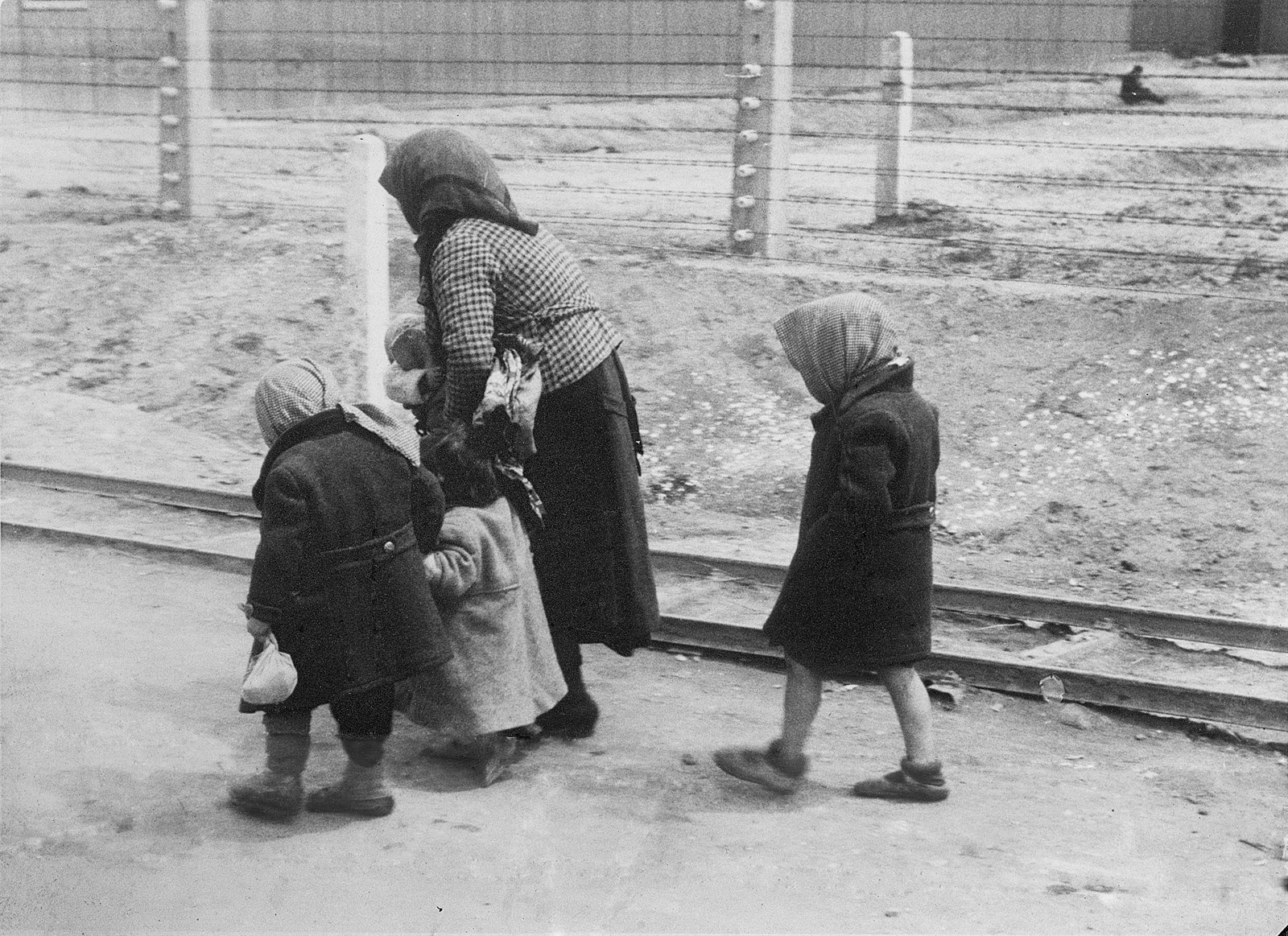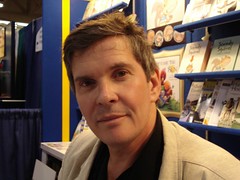Albert Einstein’s greatest achievement, the general theory of relativity, was announced by him exactly a century ago, in a series of four papers read to the Prussian Academy of Sciences in Berlin in November 1915, during the turmoil of the First World War. For many years, hardly any physicist—let alone any other type of scientist—could understand it.
The post Einstein’s mysterious genius appeared first on OUPblog.
As the new leader of the Labour Party, Jeremy Corbyn, wrestles with his own beliefs about nuclear weapons and those opposing beliefs of many members of the Shadow Cabinet, it is interesting to look back to the debates which took place in the Labour Government of Clement Attlee in the immediate post-war period.
The post Clement Attlee and the bomb appeared first on OUPblog.
Bomb: The Race to Build - and Steal - The World's Most Dangerous Weapon by Steve Sheinkin, Flash Point, 2012, 272 pp, ISBN: 1596434872
Recap:In December of 1938, a German chemist named Otto Hahn made a discovery that stunned scientists around the world: he discovered that atoms could, in fact, be split in half.
And while that may not have meant much at the time to most of the world's population, Hahn's discovery eventually became the foundation for the deadliest weapon that our world has ever known.
Bomb is the story of three countries in a race against time - a race to solve the mysteries of physics, a race to make history, a race to kill or be killed.
Review:Whew, I feel like I just ran a race myself! Book lovers, I am telling you, that Steve Sheinkin had me on the edge of my seat from page 1! Am I a history buff? No. A science scholar? Oh, no. On any given day I'm more likely to be reading People.com than really anything history related. But I could not put this book down.
Thanks to Sheinkin's narrative style and the heaps of (true!) dialogue, Bomb reads very much like a novel. There are pages and pages of photographs, and my favorites were the scrapbook style photos at the beginning of each new section, highlighting the "major players" that the reader was about to meet. The sheer amount of different names could have proven daunting for a reader, but Bomb is written so skillfully that I never once felt overwhelmed or confused. Rather, I couldn't wait to see what the next chapter would hold.
I think one of the marks of a truly great read is when you frequently find yourself talking about it with others. In the past few days, I've managed to turn a number of conversations around toward Soviet spies, particle physics, secret science labs in the desert, and weapons of mass destruction. Seriously, can you tell I'm hooked on this book?
Recommendation:If you are at all interested in World War II or in Science, Bomb is a must-read. And for the record, I'm not particularly interested in either of those subjects, but I still found Bomb completely fascinating. In the mood to expand your reading horizons? Pick up Bomb today.(PS: Did I mention that Bomb won the Sibert Medal for nonfiction + was selected as a Newbery Honor and National Book Award Finalist??)
BOB Prediction:Honestly book lovers, this one is just too close for me to call. I have a sincere love for Wonder. It's one of the best books I've read this year. BUT... Bomb is one of the best, most engaging pieces of nonfiction that I've ever had the pleasure of reading. I do not envy judge Kenneth Oppel in this round!
Quotable Quotes:- "When do we get as scared as we ought to?" - Leona Woods
- (on site at the Trinity test) "We were told to lie down on the sand, turn our faces away from the blast, and bury our heads in our arms. No one complied. We were determined to look the beast in the eye." - Edward Teller
- (in reference to the chill that settled over the jubilant crowd of physicists, following the successful test at Trinity) "It was the chill of knowing they had used something they loved - the study of physics - to build the deadliest weapon in human history." - Steve Sheinkin
There is a reason Steve Sheinkin‘s non-fiction book The Bomb: The Race to Build–and Steal–the World’s Most Dangerous Weapon (Roaring Brook, 2012) has won the 2013 Newbery Honor Award, the 2013 Sibert Medal, and the 2013 YALSA Award. This book is AMAZING–not a word I use lightly. I just finished my first non-fiction manuscript for an educational publisher. In my kidlit work, I write primarily fiction, so writing a non-fiction book was a new challenge. It’s not easy to create an appealing story that is also factually true (all those pesky facts get in the way of the narrative arc). My research on the beginnings of the Cold War led me to Bomb. Move over David McCullough–Sheinkin is a masterful story-teller of non-fiction. As his website says, “Yes, it’s true, I used to write history textbooks. But I don’t do that kind of thing anymore. Now I try to write history books that people will actually read voluntarily.” Bomb “weaves together three basic story lines,” says Sheinkin. “[T]he Americans try to build a bomb, the Soviets try to steal it, and the Allies try to sabotage the German bomb project.” My mom always said that the best children’s book can be [...]
By Gordon Fraser
When the Nazis came to power in Germany in 1933, neither the Atomic Bomb nor the Holocaust were on anybody’s agenda. Instead, the Nazi’s top aim was to rid German culture of perceived pollution. A priority was science, where paradoxically Germany already led the world. To safeguard this position, loud Nazi voices, such as Nobel laureate Philipp Lenard, complained about a ‘massive infiltration of the Jews into universities’.
The first enactments of a new regime are highly symbolic. The cynically-named Law for the Restoration of the Civil Service, published in April 1933, targeted those who had non-Aryan, ‘particularly Jewish’, parents or grandparents. Having a single Jewish grandparent was enough to lose one’s job. Thousands of Jewish university teachers, together with doctors, lawyers, and other professionals were sacked. Some found more modest jobs, some retired, some left the country. Germany was throwing away its hard-won scientific supremacy. When warned of this, Hitler retorted ‘If the dismissal of [Jews] means the end of German science, then we will do without science for a few years’.
Why did the Jewish people have such a significant influence on German science? They had a long tradition of religious study, but assimilated Jews had begun to look instead to a radiant new role-model. Albert Einstein was the most famous scientist the world had ever known. As well as an icon for ambitious young students, he was also a prominent political target. Aware of this, he left Germany for the USA in 1932, before the Nazis came to power.
How to win friends and influence nuclear people
The talented nuclear scientist Leo Szilard appeared to be able to foresee the future. He exploited this by carefully cultivating people with influence. In Berlin, he sought out Einstein.
Like Einstein, Szilard anticipated the Civil Service Law. He also saw the need for a scheme to assist the refugee German academics who did not. First in Vienna, then in London, he found influential people who could help.
Just as the Nazis moved into power, nuclear physics was revolutionized by the discovery of a new nuclear component, the neutron. One of the main centres of neutron research was Berlin, where scientists saw a mysterious effect when uranium was irradiated. They asked their former Jewish colleagues, now in exile, for an explanation.
The answer was ‘nuclear fission’. As the Jewish scientists who had fled Germany settled into new jobs, they realized how fission was the key to a new source of energy. It could also be a weapon of unimaginable power, the Atomic Bomb. It was not a great intellectual leap, so the exiled scientists were convinced that their former colleagues in Germany had come to the same conclusion. So, when war looked imminent, they wanted to get to the Atomic Bomb first. One wrote of ‘the fear of the Nazis beating us to it’.
Szilard, by now in the US, saw it was time to act again. He knew that President Roosevelt would not listen to him, but would listen to Einstein, and wrote to Roosevelt over Einstein’s signature.
When a delegation finally managed to see him on 11 October 1939, Roosevelt said “what you’re after is to see that the Nazis don’t blow us up”. But nobody knew exactly what to do. The letter had mentioned bombs ‘too heavy for transportation by air’. Such a vague threat did not appear urgent.
But in 1940, German Jewish exiles in Britain realized that if the small amount of the isotope 235 in natural uranium could be separated, it could produce an explosion equivalent to several thousand tons of dynamite. Only a few kilograms would be needed, and could be carried by air. The logistics of nuclear weapons suddenly changed. Via Einstein, Szilard wrote another Presidential letter. On 19 January 1942, Roosevelt ordered a rapid programme for the development of the Atomic Bomb, the ‘Manhattan Project’.
Across the Atlantic, the Germans indeed had seen the implications of nuclear fission. But its scientific message had been muffled. Key scientists had gone. Germany had no one left with the prescience of Szilard, nor the political clout of Einstein. The Nazis also had another priority. On 20 January, one day after Roosevelt had given the go-ahead for the Atomic Bomb, a top-level meeting in the Berlin suburb of Wannsee outlined a “final solution of the Jewish Problem”. Nazi Germany had its own crash programme.

US crash programme – on 16 July 1945, just over three years after the huge project had been launched, the Atomic Bomb was tested in the New Mexico desert.

Nazi crash programme – what came to be known as the Holocaust rapidly got under way. Here a doomed woman and her children arrive at the specially-built Auschwitz-Birkenau extermination centre.
As such, two huge projects, unknown to each other, emerged simultaneously on opposite sides of the Atlantic. The dreadful schemes forged ahead, and each in turn became reality. On two counts, what had been unimaginable no longer was.
Gordon Fraser was for many years the in-house editor at CERN, the European Organization for Nuclear Research, in Geneva. His books on popular science and scientists include Cosmic Anger, a biography of Abdus Salam, the first Muslim Nobel scientist, Antimatter: The Ultimate Mirror, and The Quantum Exodus. He is also the editor of The New Physics for the 21st Century and The Particle Century.
Subscribe to the OUPblog via email or RSS.
Subscribe to only history articles on the OUPblog via email or RSS.
Subscribe to only physics and chemistry articles on the OUPblog via email or RSS.
Image credits: Atomic Bomb tested in the New Mexico desert. Photograph courtesy of Los Alamos National Laboratory; Auschwitz-Birkenau, alte Frau und Kinder, Bundesarchiv Bild, Creative Commons License via Wikimedia Commons.
The post How Nazi Germany lost the nuclear plot appeared first on OUPblog.

Wiles, Deborah. 2010.
Countdown. New York: Scholastic.
Countdown. The story is one of a girl named Franny - a nondescript, middle child with a beautiful older sister and a "perfect" younger brother. Her father is in the 89th Air Force Division; her mother is a dutiful military wife. Her neighbors are nosy, her "crazy" uncle is suffering flashbacks from the war. She is having a major fight with her best friend; she has a crush on her neighbor.
And as if that were not enough, it's October, 1962. The Soviet Union has placed missiles in Cuba and the world as she knows it may end at any minute. Duck and cover!
Interspersed between the pages of Franny's story are photos, advertisements, song lyrics, headlines and other depictions of realia from the "Camelot" years.
According to the author,
Countdown is based on her own life, which accounts for the honesty and authenticity of it's protagonist. The collected depictions add to the story and in some instances (the bomb shelter instruction pull-out that appeared in Life magazine, the "duck and cover" photos of young children at their desks) add a palpable sense of the fear felt by Americans during those tense October weeks. Young readers will relate to Franny and gain a greater understanding of the period, however many of the song lyrics and photos will be unfamiliar to them, and are presented scrapbook style, without caption, in the body of the novel. This format adds dramatic impact at the expense of context. Will children recognize the smiling Nikita Khrushchev or the silhouetted figures of JFK and his brother deep in thought? Probably not, but it's a minor complaint.
There's a lot of
Newbery Award buzz about this ground-breaking "documentary novel." It is the first in a planned trilogy about the 1960s. Well-worth reading!
The author and Scholastic offer great resources. Links are below. Be sure to check out the trailer!
An excerpt from Countdown.Scholastic's Countdown booktalk.Scholastic's Countdown Discussion Guide.
 On this day in 1945 an atomic bomb was dropped on the Japanese city of Hiroshima. No matter what you think about the use of the bomb, there can be no doubt that this event changed the lives of millions of people. Not only did thousands of Japanese men, women, and children die, but the rest of us have had to live with the fear of nuclear war ever since. The story of what took place in Hiroshima, and later in Nagasaki, is a grim and painful one. Many of us would prefer that our children not know about what happened on that day. But, as my daughter told me a few years ago, "I want to know, so I can remember those people." Now my daughter and I light a candle on August 6th every year, to remember. I have also shared several children's books with her that describe what took place on that terrible day and why. You can find my reviews of these books on the Atomic Bomb feature page. Though all the books in the feature are excellent, I found Laurence Yep's book, Hiroshima, to be particularly meaningful and moving.
On this day in 1945 an atomic bomb was dropped on the Japanese city of Hiroshima. No matter what you think about the use of the bomb, there can be no doubt that this event changed the lives of millions of people. Not only did thousands of Japanese men, women, and children die, but the rest of us have had to live with the fear of nuclear war ever since. The story of what took place in Hiroshima, and later in Nagasaki, is a grim and painful one. Many of us would prefer that our children not know about what happened on that day. But, as my daughter told me a few years ago, "I want to know, so I can remember those people." Now my daughter and I light a candle on August 6th every year, to remember. I have also shared several children's books with her that describe what took place on that terrible day and why. You can find my reviews of these books on the Atomic Bomb feature page. Though all the books in the feature are excellent, I found Laurence Yep's book, Hiroshima, to be particularly meaningful and moving.
This year Elise and I are on the Hawaiian island of Maui on this 6th of August. We are going to light a candle as we always do, and we will remember.
Hey, I'm looking for Children's books that are about/ allude to nuclear war, cold war, atomic bombs, anything like that. This is for a project for school. So far I've got A Swiftly Tilting Planet, The Butter Battle Book, And The Magician's Nephew. I'd love to find one book though that is historical fiction or a story that takes place after a nuclear war if such a thing exists in children's lit.

Things have been really busy lately. My first book launch is coming up next week and I've been making prints of my work to sell and the pirate book is still underway. I also had dinner with Wallace Edwards this week, He's one of the best Canadian illustrators ever and he's an amazing guy. I'll write more on that later. Happy Thanksgiving to all my American friends!
 Author: Wallace Edwards
Author: Wallace Edwards
Illustrator: Wallace Edwards
Published: 2004 Kids Can Press
ISBN: 1553374622 Chapters.ca Amazon.com
Ever wonder what pops into puzzled little minds when you throw them a new expression? This clever book, cluttered with texture, humour and eccentricity, may have your answer.
You can find a thorough and informative analysis of this book here.
Mark will be covering the International Reading Association’s 52nd Annual Conference “Literacy without boundaries”, May 13-17, 2007 in Toronto. If you’ll be there and are interested being included in the JOMB coverage of the event, please contact us at [email protected] to set up an interview.
Tags:
childrens book,
idioms,
Monkey Business,
Podcast,
Wallace Edwardschildrens book,
idioms,
Monkey Business,
Podcast,
Wallace Edwards











 This episode of Just One More Book! is part of our showcase coverage of the
This episode of Just One More Book! is part of our showcase coverage of the  Author:
Author:
Sounds excellent. I love your point about books that leave you talking.
I am still working on this one! Thanks for the review.
I love, love, love WW2 and that there are pictures and even some scrapbook like pages, how awesome! Another book added to the tbr pile, thank you Katie! :)